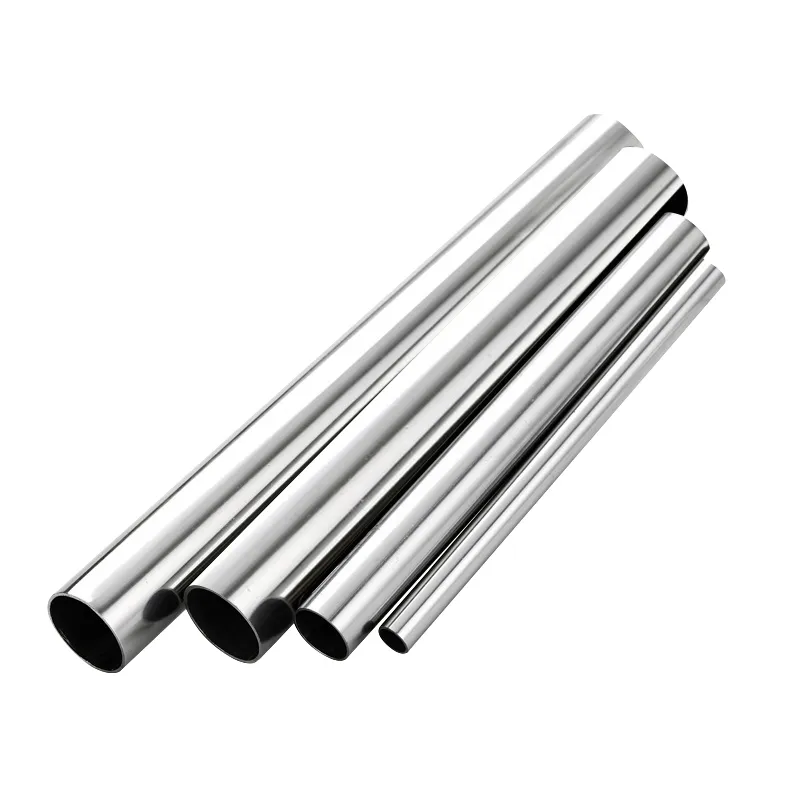High-Strength Rolled Steel Pipe Solutions for Various Industrial Applications
Dec . 23, 2024 20:53
Understanding Rolled Steel Pipes A Comprehensive Overview
Rolled steel pipes are essential components in various industries, encompassing construction, oil and gas, and manufacturing. These pipes are made from high-quality steel, which is rolled and formed into cylindrical shapes, allowing for a multitude of applications. This article delves into the manufacturing process, applications, advantages, and future trends surrounding rolled steel pipes.
Manufacturing Process
The production of rolled steel pipes typically begins with the selection of raw steel materials. These materials go through several processing methods to ensure they meet specific industry standards. The two primary methods of producing rolled steel pipes are the seamless and welded processes.
1. Seamless Pipes The seamless pipe process involves heating a solid block of steel, called a billet, and subsequently piercing it to create a hollow tube. As the billet is subjected to heat and pressure, it is further elongated and shaped on a rotary piercing mill. This method produces pipes without any seams, making them ideal for high-pressure applications, as they can withstand greater stress without the risk of failure.
2. Welded Pipes Unlike seamless pipes, welded pipes start as flat sheets of steel, which are rolled and then welded together at the seam. This process can produce pipes of varying diameters and thicknesses more efficiently than seamless methods. While welded pipes may not handle high pressures as effectively, they are highly versatile and widely used in many applications.
Applications of Rolled Steel Pipes
Rolled steel pipes serve a diverse range of applications across multiple sectors
- Construction In construction, rolled steel pipes are commonly used in structural applications, including the frameworks for buildings, bridges, and various infrastructures due to their strength and durability.
- Oil and Gas The oil and gas industry relies heavily on rolled steel pipes for drilling, transporting oil and gas from one location to another, and constructing pipelines that operate under high-pressure conditions.
- Manufacturing These pipes are also crucial in manufacturing industries, where they are used in the production of various components, machinery, and equipment.
- Transportation Rolled steel pipes are used to create structural supports in vehicles, including trucks and ships, enhancing the strength and safety of these transport systems.
Advantages of Rolled Steel Pipes
rolled steel pipe
Rolled steel pipes come with several advantages that make them a preferred choice in various applications
- Strength The inherent strength of steel, combined with the manufacturing processes, results in pipes capable of withstanding high pressures, making them suitable for demanding environments.
- Versatility Available in various sizes and specifications, rolled steel pipes can cater to numerous applications, from small-scale projects to large industrial systems.
- Durability Steel pipes are known for their long lifespan. Resistant to corrosion and physical damage, they can endure harsh conditions, ensuring reliability over time.
- Cost-Effectiveness In comparison to other materials, rolled steel pipes often come at a lower cost and require less maintenance, making them a viable option for many industries.
Future Trends
The market for rolled steel pipes is evolving, influenced by advancements in technology and changing industry needs. One key trend is the use of smart technology in pipe manufacturing. The incorporation of automation and artificial intelligence in production processes is enhancing efficiency, reducing waste, and lowering costs.
Additionally, there is a growing emphasis on sustainability in manufacturing practices. More companies are focusing on producing rolled steel pipes using recycled materials, which not only reduces their carbon footprint but also promotes environmental responsibility.
Finally, with the increased push towards renewable energy sources, the demand for rolled steel pipes in wind and solar energy projects is expected to rise. These pipes play a critical role in constructing frameworks for wind turbines and supporting infrastructure for solar panels.
Conclusion
Rolled steel pipes are a cornerstone of numerous industries, offering strength, versatility, and cost-effectiveness. As technology continues to advance and sustainability becomes a priority, the future of rolled steel pipes appears bright. By adapting to new challenges and trends, the industry is poised to meet the evolving demands of the global market, contributing to construction, manufacturing, and energy sectors worldwide.
 Afrikaans
Afrikaans  Albanian
Albanian  Amharic
Amharic  Arabic
Arabic  Armenian
Armenian  Azerbaijani
Azerbaijani  Basque
Basque  Belarusian
Belarusian  Bengali
Bengali  Bosnian
Bosnian  Bulgarian
Bulgarian  Catalan
Catalan  Cebuano
Cebuano  Corsican
Corsican  Croatian
Croatian  Czech
Czech  Danish
Danish  Dutch
Dutch  English
English  Esperanto
Esperanto  Estonian
Estonian  Finnish
Finnish  French
French  Frisian
Frisian  Galician
Galician  Georgian
Georgian  German
German  Greek
Greek  Gujarati
Gujarati  Haitian Creole
Haitian Creole  hausa
hausa  hawaiian
hawaiian  Hebrew
Hebrew  Hindi
Hindi  Miao
Miao  Hungarian
Hungarian  Icelandic
Icelandic  igbo
igbo  Indonesian
Indonesian  irish
irish  Italian
Italian  Japanese
Japanese  Javanese
Javanese  Kannada
Kannada  kazakh
kazakh  Khmer
Khmer  Rwandese
Rwandese  Korean
Korean  Kurdish
Kurdish  Kyrgyz
Kyrgyz  Lao
Lao  Latin
Latin  Latvian
Latvian  Lithuanian
Lithuanian  Luxembourgish
Luxembourgish  Macedonian
Macedonian  Malgashi
Malgashi  Malay
Malay  Malayalam
Malayalam  Maltese
Maltese  Maori
Maori  Marathi
Marathi  Mongolian
Mongolian  Myanmar
Myanmar  Nepali
Nepali  Norwegian
Norwegian  Norwegian
Norwegian  Occitan
Occitan  Pashto
Pashto  Persian
Persian  Polish
Polish  Portuguese
Portuguese  Punjabi
Punjabi  Romanian
Romanian  Samoan
Samoan  Scottish Gaelic
Scottish Gaelic  Serbian
Serbian  Sesotho
Sesotho  Shona
Shona  Sindhi
Sindhi  Sinhala
Sinhala  Slovak
Slovak  Slovenian
Slovenian  Somali
Somali  Spanish
Spanish  Sundanese
Sundanese  Swahili
Swahili  Swedish
Swedish  Tagalog
Tagalog  Tajik
Tajik  Tamil
Tamil  Tatar
Tatar  Telugu
Telugu  Thai
Thai  Turkish
Turkish  Turkmen
Turkmen  Ukrainian
Ukrainian  Urdu
Urdu  Uighur
Uighur  Uzbek
Uzbek  Vietnamese
Vietnamese  Welsh
Welsh  Bantu
Bantu  Yiddish
Yiddish  Yoruba
Yoruba  Zulu
Zulu 












